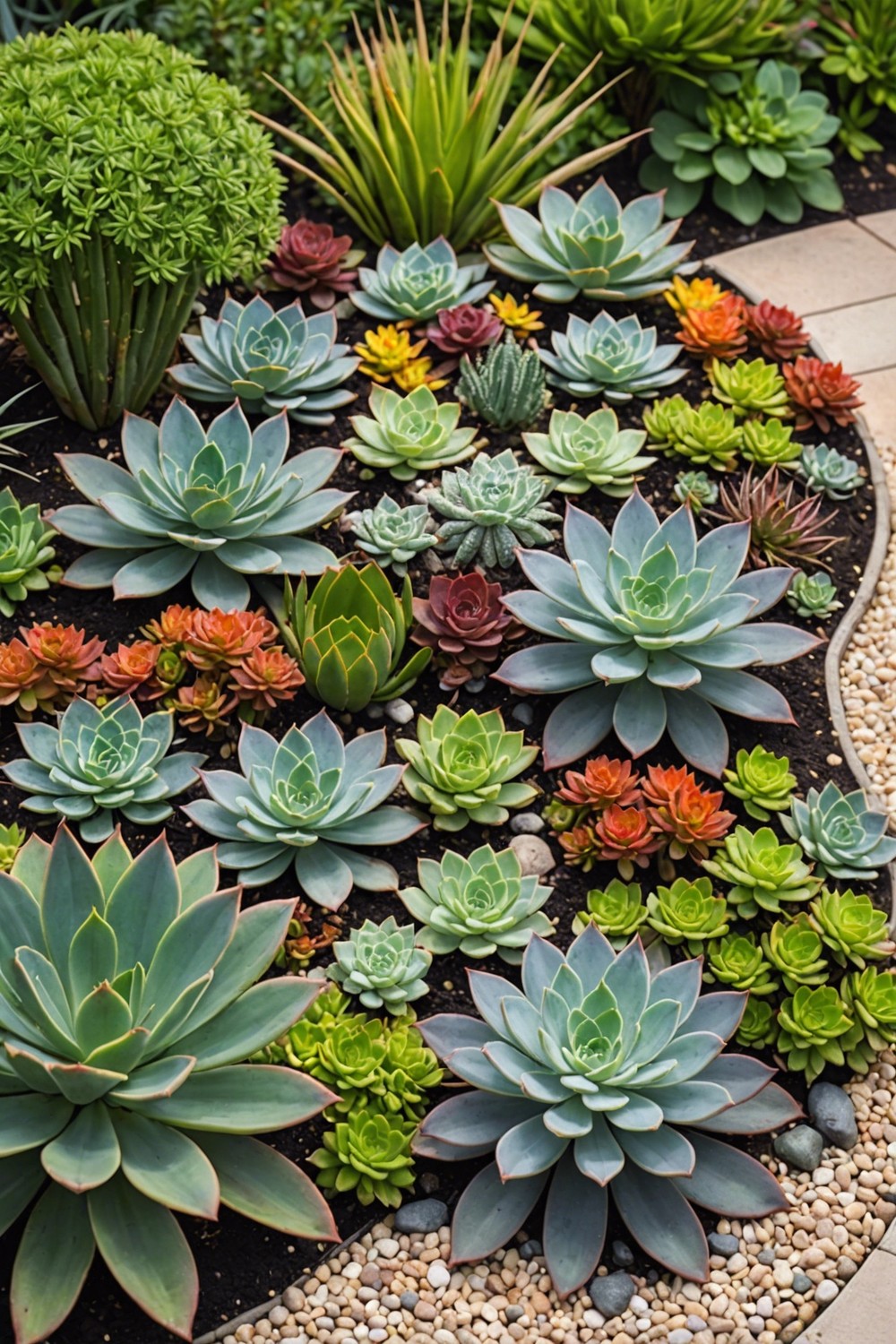Beautiful Plants For Your Interior
Beautiful Plants For Your Interior
Ditch the hose and create a beautiful, water-conscious oasis with these 10 ingenious dry garden ideas. From selecting drought-tolerant plants to incorporating mulch and permeable pavers, we’ll show you how to conserve water while still enjoying a stunning outdoor space that’s perfect for relaxing and entertaining.

Selecting plants that thrive in dry conditions is key to maintaining a beautiful yet water-efficient garden. Opt for plants like succulents, yucca, and Texas sage, which can survive with minimal watering.
These plants have adapted to store water in their leaves, stems, or roots, making them perfect for areas with low rainfall.
By incorporating drought-tolerant plants into your garden, you’ll significantly reduce your water consumption while still enjoying a vibrant outdoor space.

One key strategy for a water-conserving garden is to select low-water ground covers.
These plants are specifically designed to thrive in dry conditions and require minimal watering.
Instead of using traditional lawn grass, consider alternatives like creeping thyme, sedum, or vinca minor.
These ground covers are not only drought-tolerant but also require minimal maintenance, reducing the need for frequent watering and care.

Incorporating mulch into your dry garden is a simple yet effective way to retain moisture in the soil.
Not only does it reduce evaporation, but it also slows down runoff, allowing the soil to absorb the water more efficiently.
Additionally, as the mulch breaks down, it adds organic matter to the soil, further improving its water-holding capacity.
This means you’ll need to water your garden less frequently, making it an excellent water-conserving technique.

A well-designed succulent garden can be a beautiful and water-efficient addition to your home. Start by selecting a variety of succulent species with different textures, colors, and shapes to create visual interest.
Consider a mix of plants with varying growth rates to ensure year-round appeal.
Use a well-draining potting mix and containers with good drainage holes to prevent root rot.

Efficient irrigation systems are essential to minimize water waste in your dry garden. Install a drip irrigation system, which delivers water directly to the roots of the plants, reducing evaporation and runoff.
You can also use smart irrigation controllers that adjust water distribution based on weather conditions, soil moisture, and plant type.
These systems ensure that your plants receive the right amount of water, saving this precious resource.

Add decorative rocks and gravel to your dry garden to create a visually appealing landscape while conserving water.
These inorganic groundcovers suppress weed growth, reducing maintenance and water loss.
Plus, they allow rainwater to percolate through, recharging groundwater.
Choose from an array of colors and textures to create a unique, low-maintenance focal point in your dry garden.

Cacti and succulent combinations bring visual interest and contrast to your dry garden.
Pairing rounded, soft-leaved succulents with prickly, columnar cacti creates a striking juxtaposition.
Try combining a towering saguaro cactus with a cluster of low-growing, flowering echeverias or a stunning aloe plant surrounded by a ring of petite, spiny urchin cacti.
The key is to balance contrasting shapes, textures, and sizes to create a visually appealing arrangement.

Using permeable pavers for pathways is an excellent way to reduce stormwater runoff and allow rainwater to percolate back into the soil. This eco-friendly option replaces traditional impervious materials, reducing the burden on storm drains and decreasing the risk of water pollution.
Permeable pavers also reduce the risk of puddles and slippery surfaces, making your pathways safer and more accessible.

A gravel garden is a perfect solution for a dry garden, requiring minimal watering and maintenance.
To create one, start by removing any grass or weeds from the area.
Then, lay down a layer of landscape fabric to prevent weeds from growing back.
Next, spread a thick layer of gravel, leaving space for plants that thrive in dry conditions, such as succulents or cacti.
This type of garden is not only water-efficient but also adds a visually appealing texture to your outdoor space.

Incorporating water-storing plants is an excellent way to create a dry garden that consumes less water. These plants, also known as succulents, have adapted to survive in dry conditions by storing water in their leaves, stems, or roots.
Some popular water-storing plants include aloe vera, agave, and echeveria.
These plants are not only low-maintenance but also add unique textures and shapes to your garden. They require minimal watering, making them an ideal choice for a water-conserving garden.
